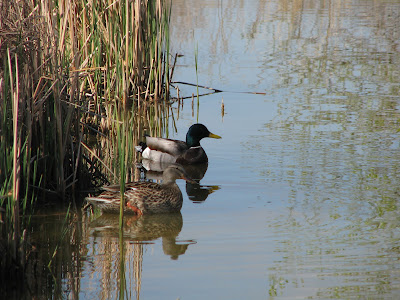We collected water samples from Horsetooth Reservoir and the Poudre on June 25th.
 |
| Public swim beach, on the east side |
A comparison sample from the Big Thompson River (about 15 miles south) on June 26th...
And another comparison sample from the Poudre River - two miles downstream, on June 29th.
Then the jars sat on my kitchen counter for days... waiting to get their picture taken. So I moved them outside to the front porch railing, shook them up and snapped their picture on July 7th.
 |
| Horsetooth Reservoir (swim beach) |
 |
| Poudre River |
 |
| Big Thompson (This was not shaken - it has sat undisturbed for 11 days. No idea what that stuff is growing on the sides) |
24 hours go by...
 |
| River 1 |
 |
| River 2 (note the presence of ash particles from the fire) |
 |
| Horsetooth Reservoir. Would you swim in this? Yuck. |
Another 48 hours go by...
 |
| From L to R: Big Thompson, Horsetooth, Poudre River 1 & 2 |
So, what have we learned so far? Horsetooth is really dirty. I don't know what that hazy stuff is... Here's a close-up:
This was the jar before I shook it up again to take my pictures. It has sat for 11 days, and the water is still hazy. Interesting layers... but I have no idea what all of this fine, light brown hazy material is. All I know is that I would not be too gung-ho about swimming in it.
We learned that the Poudre River is really clean. Errr... should I say - was? (more on that in a moment..). This water is CRYSTAL clear. Here is a close-up, pre shake-up.
Those big black particles are ash from the fire. If you aren't familiar with the area, the High Park Fire jumped the canyon that the river flows through, so there was fire for several miles, on either side of the canyon (and river) - hence the fire debris. There is also a lot of rose quartz and granite in the sand particulate - pretty uniform size throughout, save the pebbles on top.
And then we have the *ugly* sample from the Big Thompson (see above). This is where my sparse geologic knowledge fails me - I don't know how to explain the difference between the two river samples. The rivers are only 15 - 20 miles apart. They cut through the same geologic strata in the foothills. Yet one is full of quartz and probably some limestone, and the other is silty... granite and slate perhaps? If you are reading this and you know a little about it, could you tell me why they are so vastly different? The only possible explanation I can think of is that the Big Thompson was subjected to a catastrophic flood 36 years ago on July 31st, 1976. The flood, due to 7.5 inches of rainfall above Estes park, pushed tons of debris down the canyon. The location that we took our sample from was about 5 miles downstream from where the river exits the canyon. No idea if I am on to something, but that is just my guess...
We took a drive down the Poudre Canyon on July 10th to survey the fire damage and take a water sample from the Cache la Poudre River. We stopped at Stove Prairie Landing to wade into the river. The mud had a very strange feel to it. You can see how much ash is in the water by looking at Rylan's feet.
 |
| The mud is sparkly like powdered charcoal (well it is ash...) |
 |
| This the jar after it settled overnight. (sorry it so fuzzy...) |
 |
| All of the jars on 7/18/12. The Horsetooth sample is finally clear. |
We will routinely take samples through the rest of summer and fall to see how long it takes the ash to clear. We haven't had much rain in the past week, so I think it will take a full season of rain and snow to clear the hillsides completely. This will be interesting to see what happens!



























